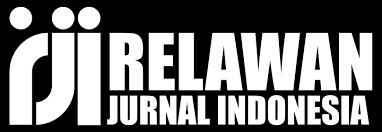ANALISIS DAMPAK KENAIKAN HARGA EMAS TERHADAP STABILITAS MONETER DI INDONESIA
DOI:
https://doi.org/10.61722/jiem.v3i6.5072Keywords:
gold price, monetary stability, inflation, exchange rate, interest rate, Bank Indonesia, ECM.Abstract
Monetary stability is a key element in maintaining the health of the national economy, as measured by indicators such as inflation, the rupiah exchange rate, interest rates, and the money supply. One of the external factors that affects monetary stability is the fluctuation of gold prices, which act as a safe haven asset in the face of economic intimidation. This study aims to analyze the impact of rising gold prices on monetary stability in Indonesia. The approach used is quantitative with the time series data analysis method and the Error Correction Model (ECM) estimation model, with monthly data from January 2005 to December 2024. The results of the study show that the increase in gold prices has a significant effect on inflation, exchange rates, and interest rate policy in Indonesia. Gold not only triggers sectoral inflation through increasing jewelry prices, but also has an impact on the depreciation of the rupiah due to capital flows and changes in people's investment preferences. In the long term, the soaring gold price also affects the monetary policy response, especially in controlling inflation and stabilizing the exchange rate. Based on these findings, it is recommended that the monetary authorities strengthen the coordination of fiscal and monetary policies, encourage the development of the domestic gold industry, and consider the establishment of the Indonesian Gold Bank as a strategy to increase national economic resilience and maintain monetary stability.
References
Tarmidi, L. T. (1999). Krisis moneter Indonesia: Sebab, dampak, peran IMF dan saran. Bulletin of Monetary Economics and Banking, 1(4), 1-25.
Sari, P. K., & Fakhruddin, F. (2016). Identifikasi Penyebab Krisis Moneter dan Kebijakan Bank Sentral di Indonesia: Kasus Krisis Tahun (1997-1998 dan 2008). Jurnal Ilmiah Mahasiswa Ekonomi Pembangunan, 1(2), 377-388.
Shifa, M., Amalia, A., Majid, M. S. A., & Marliyah, M. (2022). Penggunaan mata uang dinar dan dirham sebagai solusi prediksi krisis moneter di Indonesia. Fair Value: Jurnal Ilmiah Akuntansi Dan Keuangan, 4(6), 2321-2338.
Yudanto, N., & Santoso, M. S. (1998). Dampak krisis moneter terhadap sektor riil. Bulletin of Monetary Economics and Banking, 1(2), 131-158.
Warjiyo, P. (2006). Stabilitas sistem perbankan dan kebijakan moneter: keterkaitan dan perkembangannya di Indonesia. Bulletin of Monetary Economics and Banking, 8(4), 429-454.
Junaedi, D., Arsyad, M. R., Norman, E., Romli, M., & Salistia, F. (2021). Dampak Pandemi Covid-19 terhadap Stabilitas Moneter Indonesia. Al-Kharaj: Jurnal Ekonomi, Keuangan & Bisnis Syariah, 3(1), 17-36.
Chandra, E. K., & Wahyuningsih, D. (2021). Analisis Pengaruh Suku Bunga, Jumlah Uang Beredar Dan Nilai Tukar Terhadap Inflasi Di Indonesia Periode 2011-2019. Buletin Ekonomika Pembangunan, 2(1).
Rahardjo, K. A. (2024). Pengaruh Suku Bunga, Jumlah Uang Beredar Dan Nilai Tukar Rupiah Terhadap Tingkat Inflasi Tahun 2018-2022. Economics and Digital Business Review, 5(1), 345-354.
Perlambang, H. (2010). Analisis pengaruh jumlah uang beredar, suku bunga sbi, nilai tukar terhadap tingkat inflasi. Media Ekonomi, 49-68.
Gunarsa, S. M. (2019). Kontrak Berjangka Komoditas Emas Sebagai Instrumen Transaksi Derivatif dalam Kajian Hukum Ekonomi Syariah. Undang: Jurnal Hukum, 2(1), 95-117.
Nurhasanah, S., Puri, PA, & Wilis, RA (2021). Pengaruh Harga Minyak Dunia, Harga Emas Dunia, Tingkat Inflasi, Kurs Rupiah, Indeks Dow Jones Dan Indeks Shanghai Composite Terhadap Harga Saham Gabungan Yang Terdaftar Dibursa Efek Indonesia Periode 2015-2019. Jurnal Ilmiah Manajemen, Ekonomi, & Akuntansi (MEA) , 5 (3), 2935-2949.
Baskara, RT, Izmuddin, I., Faizah, S., Febrian, H., Daulay, M., & Zai, J. (2023). Pengaruh Inflasi dan Nilai Tukar Terhadap Indeks Harga Saham pada JII yang Dimoderasi oleh Harga Emas Dunia (Studi Kasus Sebelum dan Sesudah Covid 19 Periode 2018-2021). Jurnal Ilmiah Ekonomi Islam , 9 (2), 2744-2758.
Downloads
Published
Issue
Section
License
Copyright (c) 2025 JURNAL ILMIAH EKONOMI DAN MANAJEMEN

This work is licensed under a Creative Commons Attribution-ShareAlike 4.0 International License.













